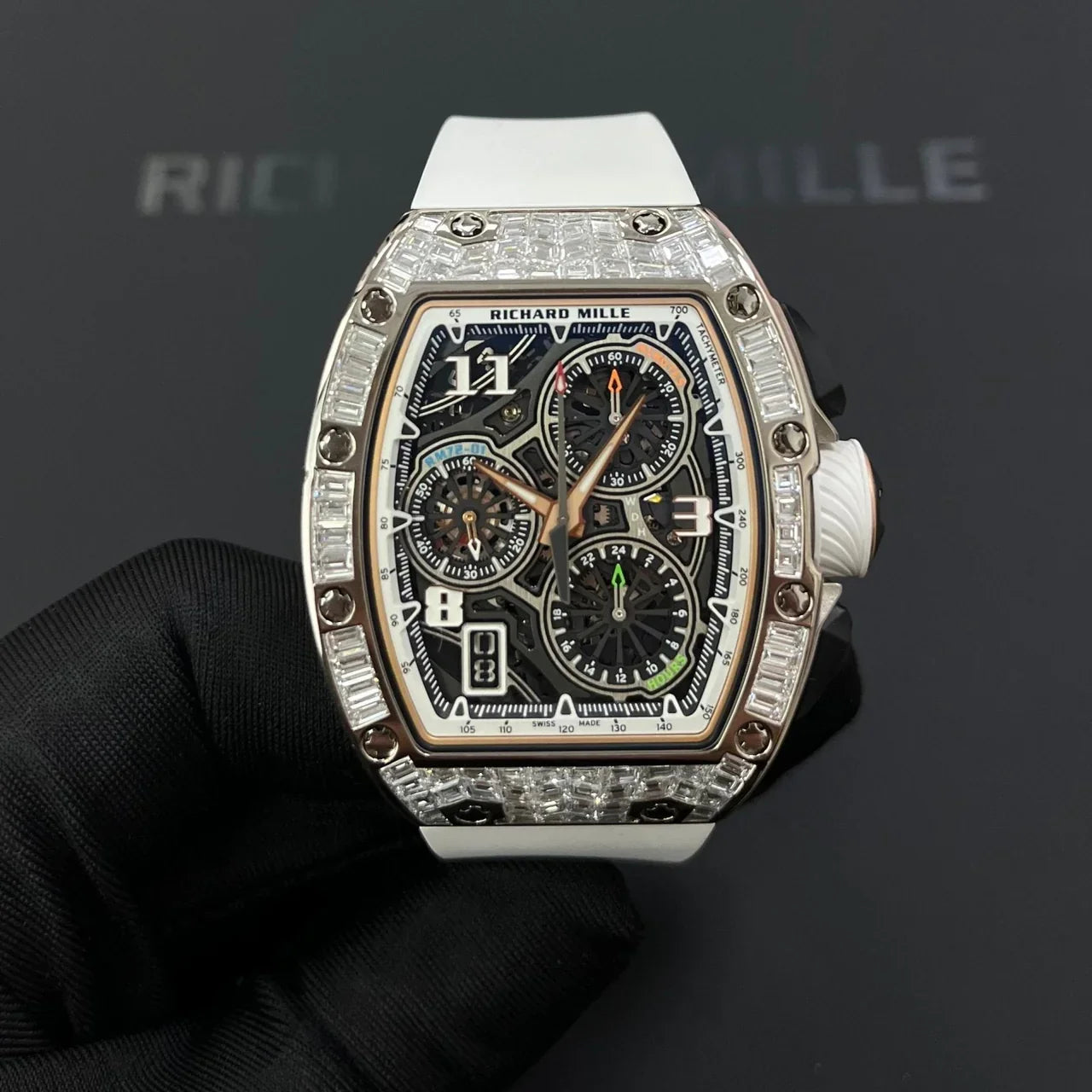Chronographs may look simple from the outside—push the buttons to start, stop, and reset. But inside, they contain finely tuned mechanisms. Understanding the difference between a standard (non-flyback) chronograph and a flyback is critical to avoiding costly damage.
Table of Contents
How a Standard Chronograph Reset Works
In most mechanical chronographs, a reset hammer pushes the hands back to zero by pressing them against a heart-shaped cam. This action is meant to occur only when the chronograph is stopped, with the clutch disengaged from the gear train.
If the reset pusher is pressed while the chronograph is running, the hammer collides with moving parts under load, which can:
- Bend or break the reset lever
- Shear gear teeth
- Damage the heart cam or pivots
- Knock the hands out of alignment
Why a Flyback Can Reset Safely
A flyback chronograph, originally developed for pilots, is engineered to safely reset while running without harm. When the flyback pusher is pressed:
- The clutch disengages to stop power transmission.
- The reset hammer snaps the hands to zero.
- The clutch re-engages instantly, starting timing again.
This sequence protects the movement from the impact damage that can occur in a standard chronograph.
Flyback vs Non-Flyback Chronograph
| Feature | Non-Flyback | Flyback |
|---|---|---|
| Reset Process | Stop → Reset → Start | Reset & Restart in one press |
| Can Reset While Running? | No — can cause damage | Yes — designed for it |
| Risk of Damage | High risk if reset mid-run | Low risk — mechanism disengages safely |
| Typical Use Case | Everyday timing | Aviation, motorsport, rapid event timing |
| Example Models | Rolex Daytona, Patek Philippe Ref. 5070 | Richard Mille RM 11-03, Patek Philippe Nautilus 5990 |
Bottom Line
- Non-flyback: Always stop before resetting to prevent mechanical damage.
- Flyback: Safe for in-motion resets, thanks to specialized sequencing.
For watch owners, knowing which type you have can be the difference between smooth timing and an expensive trip to the watchmaker.
Examples of Flyback and Non-Flyback Chronographs
| Brand & Model | Flyback? |
|---|---|
| Patek Philippe Aquanaut 5968A / 5968G / 5968R | Yes (flyback) |
| Patek Philippe Nautilus 5990 | Yes (flyback) |
| AP Royal Oak Offshore 26238TI | Yes (flyback) |
| AP Code 11.59 Flyback Tourbillon | Yes (flyback) |
| AP Royal Oak Concept Split-Sec | Yes (flyback) |
| Richard Mille RM 11-03 | Yes (flyback) |
| Rolex Oyster Zerograph Ref. 3346 (RARE) | Yes (flyback) |
|
Patek Philippe Ref. 5070, 5270, & similar |
No |
| Rolex Daytona | No |
Frequently Asked Questions
Can resetting a running non-flyback chronograph break it?
Yes, forcing the reset while running can damage the reset lever, heart cam, or other delicate components.
How can I tell if my chronograph is flyback?
Most flybacks are labeled as such in the model name or specifications; check the manual or the brand's official site.
Why were flyback chronographs invented?
They were designed for pilots and navigators who needed rapid, continuous timing without pausing between events.

